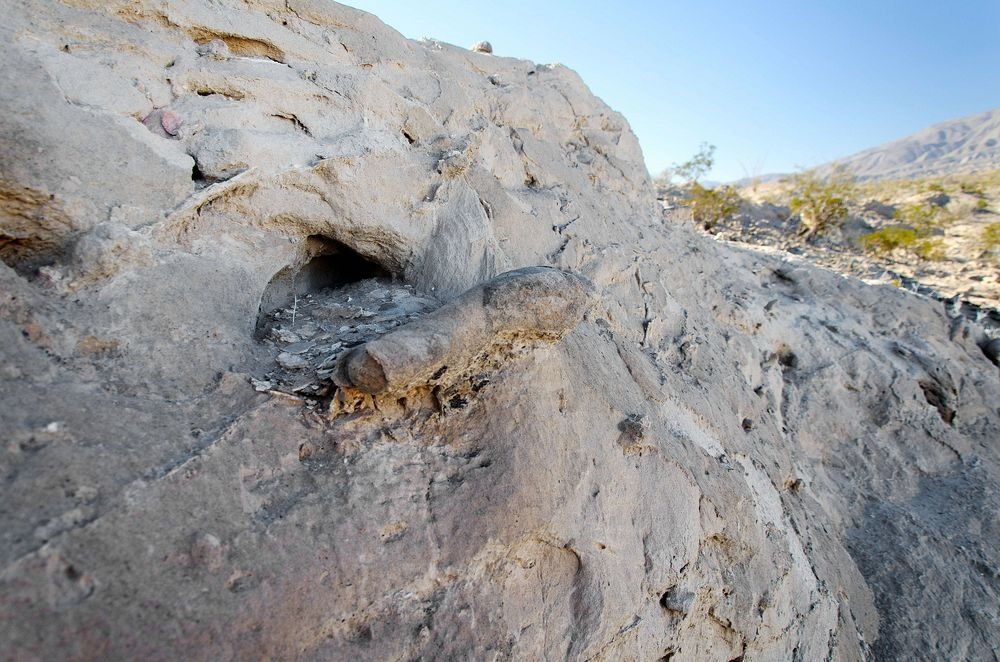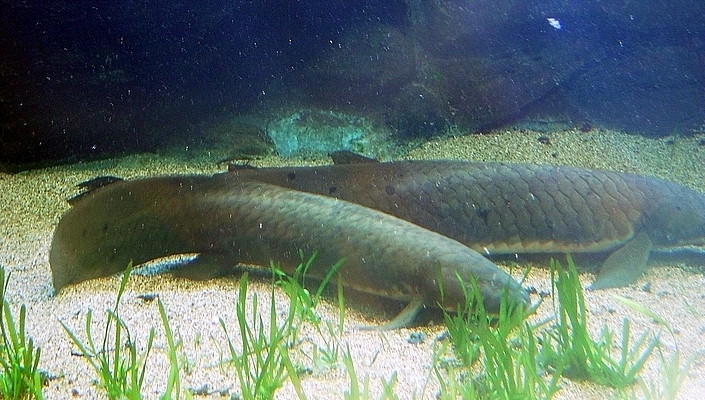The lungfish, also known as salamanderfish, is a type of freshwater fish best known for its ability to live on land, without water, for months on end, and sometimes even years. As its name suggest, the lungfish have a highly evolved respiratory system that can take oxygen straight from the air, just like land animals do. In fact, some species of lungfish are so used to breathing air that they slowly lose the function of their gills as the fish approach adulthood. While they still live in water, they need to regularly come up to the surface for air. These fish can even drown if they are held underwater for a long time.
The lungfish have elongated bodies, like eels, with thread-like pectoral and pelvic fins which they use to swim and crawl along the bottom. They generally inhabit shallow waters, such as swamps and marshes, but they are also found in larger lakes.
When there is water, the lungfish behaves like any other fish, swimming in the waters and eating small fish and crustaceans on the bottoms of ponds and streams. But when the dry season hits, the lung fish burrows itself deep into the mud, digging out a path by taking mud into its mouth and forcing it out its gills. After the fish has reached a comfortable depth, it will stop digging and secrete a mucous out of its skin that hardens to form a protective cocoon around it. Only the mouth is left exposed for breathing. For its long hibernation, the lungfish will greatly reduce its metabolism and live off the muscle tissues in its tail. Once the water returns and the mud softens, the lungfish will wriggle out of its burrow. Some reports claim that the fish can stay underground in dried mud for as long as four years.
Source
The lungfish have elongated bodies, like eels, with thread-like pectoral and pelvic fins which they use to swim and crawl along the bottom. They generally inhabit shallow waters, such as swamps and marshes, but they are also found in larger lakes.
When there is water, the lungfish behaves like any other fish, swimming in the waters and eating small fish and crustaceans on the bottoms of ponds and streams. But when the dry season hits, the lung fish burrows itself deep into the mud, digging out a path by taking mud into its mouth and forcing it out its gills. After the fish has reached a comfortable depth, it will stop digging and secrete a mucous out of its skin that hardens to form a protective cocoon around it. Only the mouth is left exposed for breathing. For its long hibernation, the lungfish will greatly reduce its metabolism and live off the muscle tissues in its tail. Once the water returns and the mud softens, the lungfish will wriggle out of its burrow. Some reports claim that the fish can stay underground in dried mud for as long as four years.
Source






















